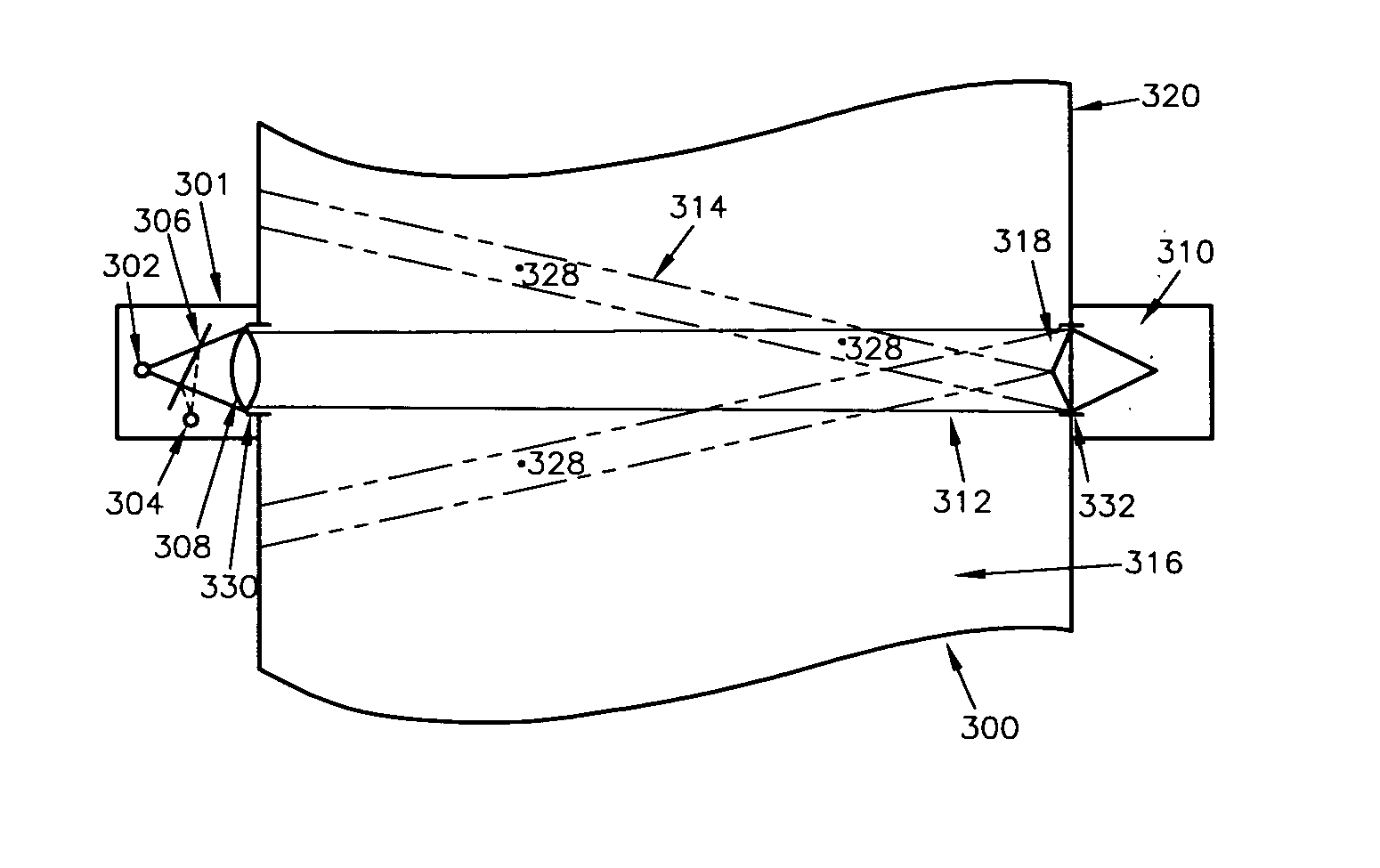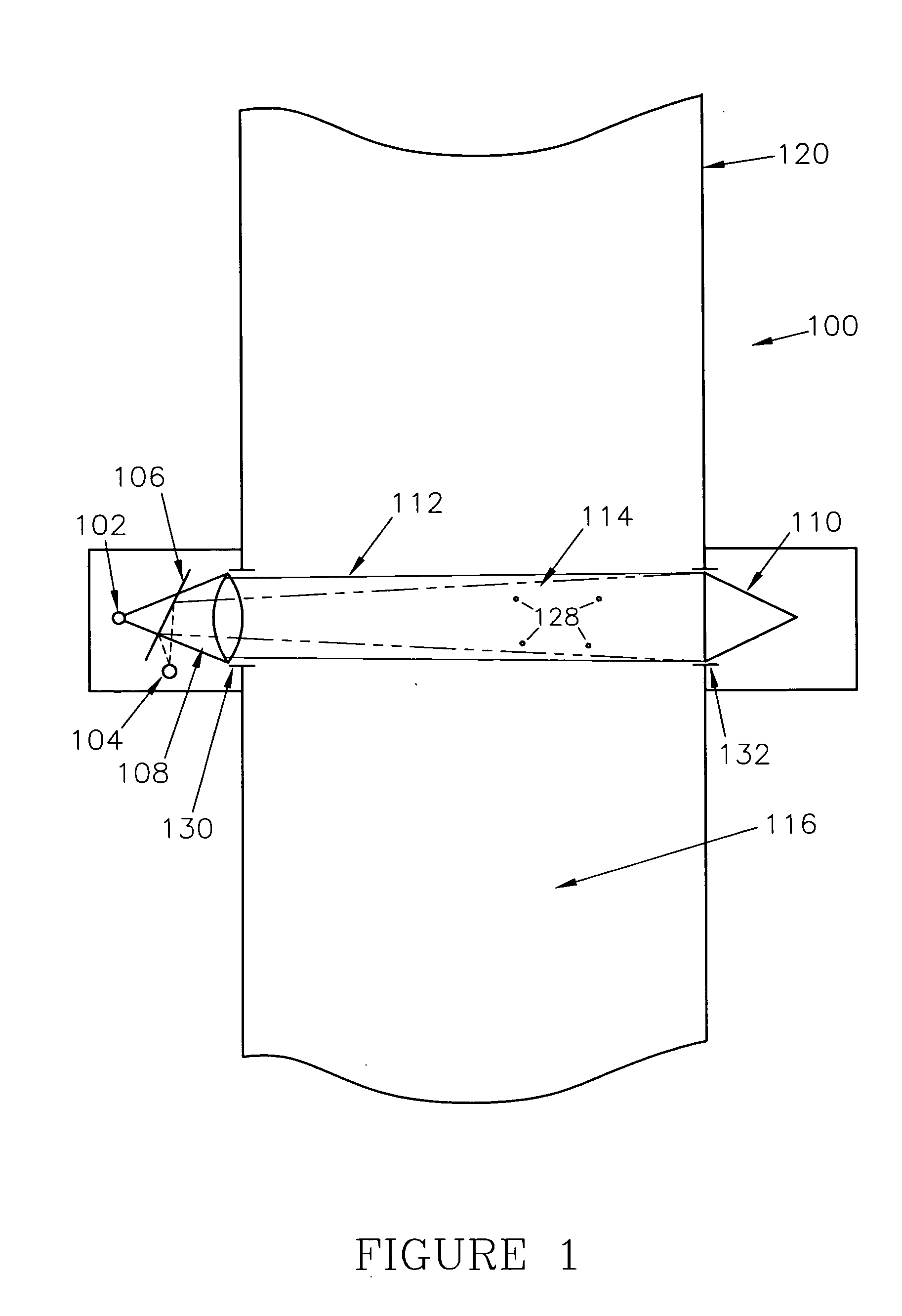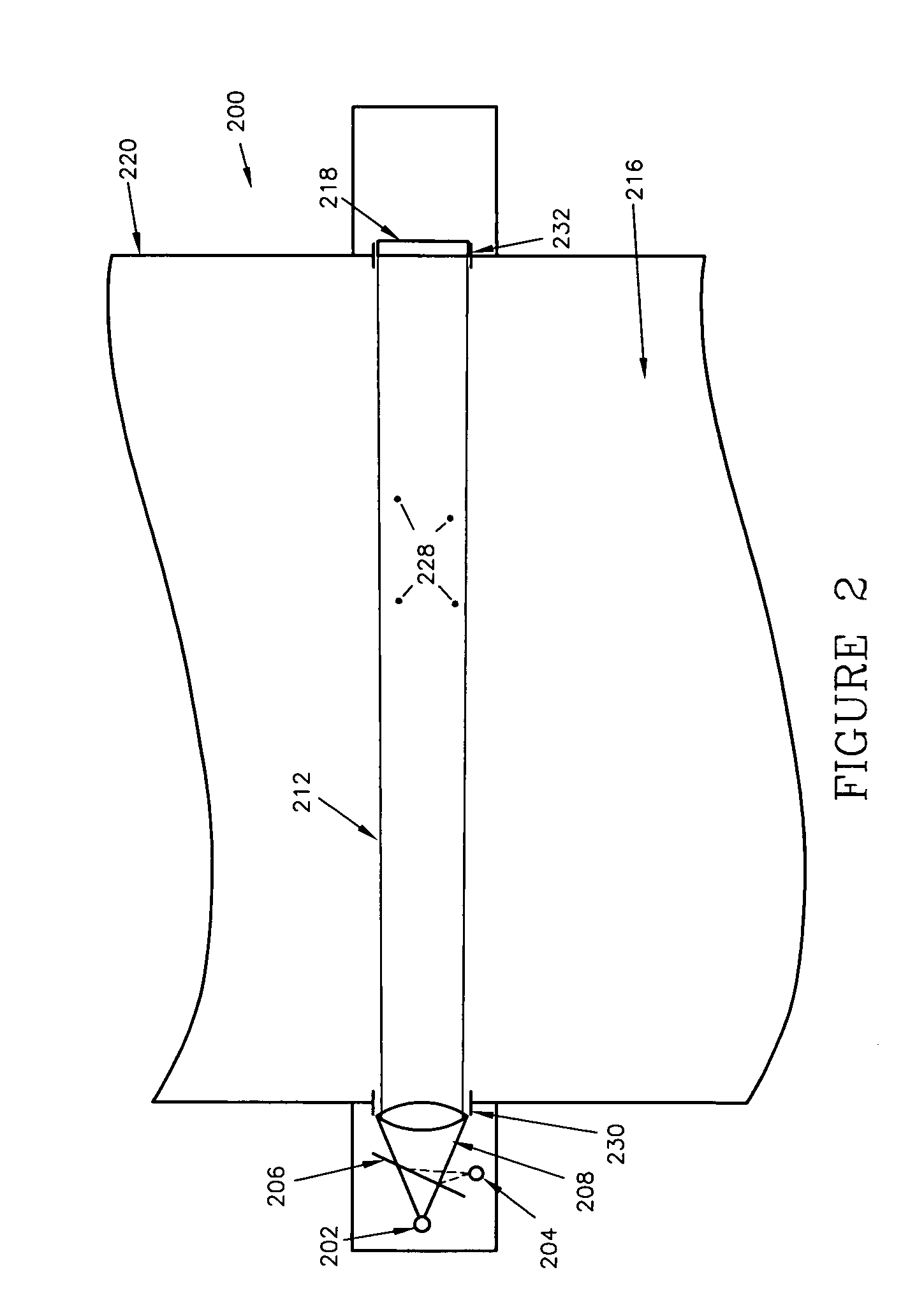Measuring particulate matter in a fluid
a technology of particulate matter and fluid, which is applied in the direction of measurement devices, instruments, bundled fibre light guides, etc., can solve the problems of affecting the accuracy of measurement results, so as to achieve accurate measurement of particulate properties.
- Summary
- Abstract
- Description
- Claims
- Application Information
AI Technical Summary
Benefits of technology
Problems solved by technology
Method used
Image
Examples
Embodiment Construction
[0024]FIGS. 3, 3A and 4 depict a device 300 for measuring near forward scatter caused by particulates 328 in a fluid 316 according to various embodiments of the present invention. The device 300 may include a transceiver 301 and a reflector 310. The transceiver 301 may include a light source 302, a detector 304, a beam splitter 306 and a lens 308. The light source 302 may be any device capable of projecting a light beam such as, for example, a light emitting diode (LED), a diode or gas laser, or an incandescent source. According to one embodiment, a green LED may be used as the light source 302. The wavelength of the light source 302 may be determined based on the size of the particulates to be measured. Also, according to various aspects, the device 300 may contain more than one light source to measure scattered optical energy at multiple wavelengths. The detector 304 may be a photodiode or any other device capable of sensing optical energy reflected from the reflector 310 at a sma...
PUM
| Property | Measurement | Unit |
|---|---|---|
| near forward angles | aaaaa | aaaaa |
| near forward angles | aaaaa | aaaaa |
| wavelengths | aaaaa | aaaaa |
Abstract
Description
Claims
Application Information
 Login to View More
Login to View More - R&D
- Intellectual Property
- Life Sciences
- Materials
- Tech Scout
- Unparalleled Data Quality
- Higher Quality Content
- 60% Fewer Hallucinations
Browse by: Latest US Patents, China's latest patents, Technical Efficacy Thesaurus, Application Domain, Technology Topic, Popular Technical Reports.
© 2025 PatSnap. All rights reserved.Legal|Privacy policy|Modern Slavery Act Transparency Statement|Sitemap|About US| Contact US: help@patsnap.com



